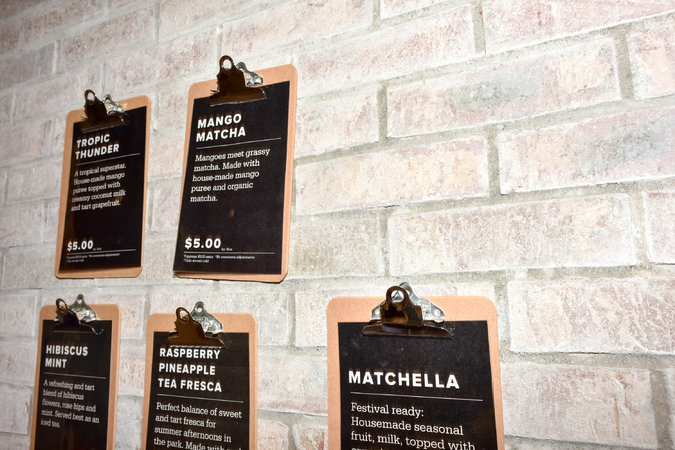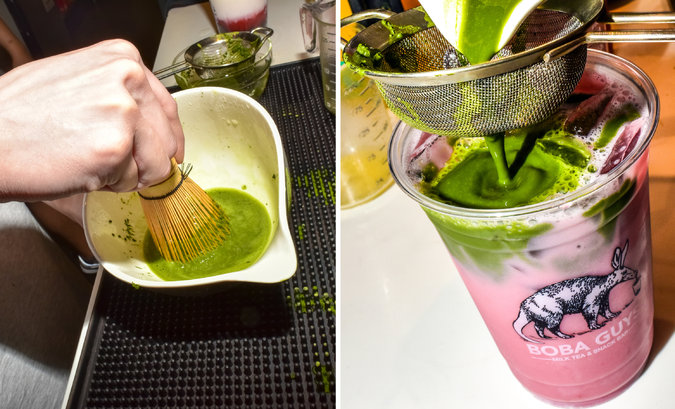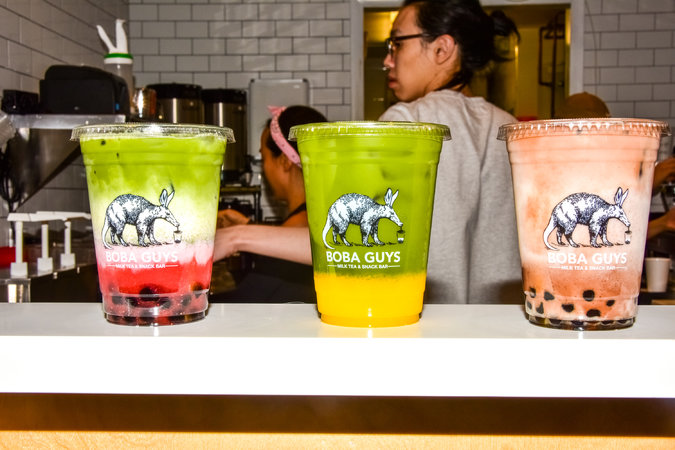“One hundred percent sweetness,” the clerk said helpfully to a customer, “is like a Coke.”
Also: Small or large? Hot or cold, and, if cold, lots of ice or just a little?


Anchal Lamba, 27, owns eight Gong Cha bubble tea shops in New York City and has franchised others elsewhere in New York State and in Massachusetts, New Jersey and Texas. “My stores in Flushing did well from Day 1,” she said of a location in a section of Queens, “because the Asians customers are there” and were familiar with the product.
According to the Tea Association of the U.S.A., a trade group, 87 percent of American millennials drink tea. Understandably, Ms. Lamba has made them a key target of her marketing efforts, sponsoring events at New York University and supplying drinks to club meetings there.
The drink she is trying to push further into the mainstream was created, so the story goes, at a teahouse in Taichung, Taiwan, almost 30 years ago when, on a whim, a manager poured the tapioca balls from her pudding into a glass of iced Assam tea.
After becoming a hit in Taiwan, bubble tea was embraced throughout Asia. It started to become increasingly available on the East and West Coasts a few years back.
On a recent visit to Boba Guys, Patrick Lin, a regular customer, ordered four drinks, including a matcha latte and a horchata, which is made with cinnamon and rice milk.
“I’m trying to try everything on the menu,” Mr. Lin, a restaurateur, a said.
Ms. Lamba of Gong Cha acknowledged that there could take time for some people to appreciate the chewy, gelatinous bubbles in the tea. “Sometimes, people are a little freaked out by it,” she said. “They’ll have a sip and say, ‘This is interesting,’ and then they’ll have another sip and think, ‘Hmmm, maybe I will have it again.’”


In recent years, iced tea and hot tea have been making inroads against coffee, but there are signs of stress: Starbucks recently announced that it would close its stand-alone Teavana stores, calling into question the future of a brand it bought for $620 million in 2012.
Advertisement
Continue reading the main story
Purveyors of bubble tea hope they can take advantage of the growing popularity of tea. Some shops offer dozens of beverage options — like fruit-based teas, smoothies and slushes — with some of the drinks even incorporate coffee.
But it is the basic bubble tea, or bubble milk tea, that is the main event. Vivi Bubble Tea, a franchise business, has 45 shops in the United States, most of them on the East Coast, and seven more under construction. Ten Ren Tea and Ginseng Company, which is based in Taiwan, has four stores in New York City and 26 in other states. CoCo Fresh Tea and Juice has 32 locations in the country, 22 of them in New York City.
Boba Guys began in San Francisco in 2011 as a pop-up stand inside a ramen noodle restaurant. It was a testing ground for the founders, Bin Chen and Andrew Chau, to refine their three flavors (classic black milk tea, jasmine and soy milk tea) and to work on new concoctions.
“We were in the Mission area, where there were a lot of curious foodies and a lot of Asian-Americans who had grown up drinking bubble tea,” said Mr. Chen, a former creative director at a messenger bag company. He and Mr. Chau opened their first stand-alone store in San Francisco in 2013 and have since expanded to six in the Bay Area and three in New York City.
Their goal is to differentiate Boba Guys by positioning it as a premium brand, the bubble tea equivalent of upscale coffee spots like Blue Bottle and La Colombe.
Many bubble tea companies have opened stores near college campuses. The thinking, said Derrick Fang of Ten Ren Tea, “is that Asian students will introduce the culture to their non-Asian friends — and it works.”
There is also a concerted effort to guide newcomers. “We introduce people to the way to order, and we explain the toppings and the different flavors,” Mr. Fang said. “And we had to make adjustments for the U.S. market. People in America like a sweeter taste than in Asia.”

Continue reading the main story
Article source: https://www.nytimes.com/2017/08/16/business/smallbusiness/bubble-tea.html?partner=rss&emc=rss
Speak Your Mind
You must be logged in to post a comment.